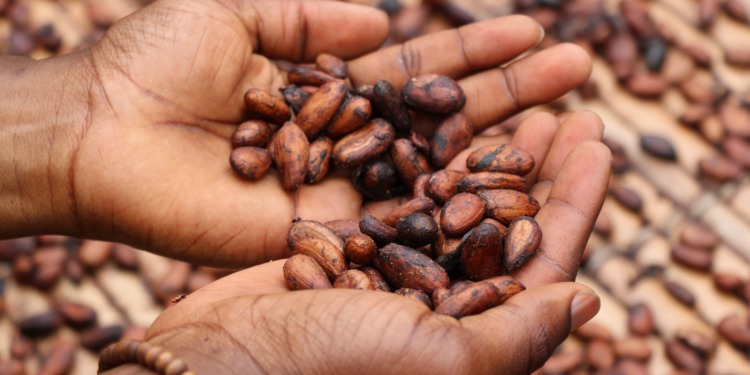Many of us cannot help but be captivated by the rich flavour of chocolate. However, behind the irresistible taste lies a cocoa supply chain tainted by broken promises.
Tracing the Twisted Path
Chocolate is a simple pleasure that many look forward to, but the journey from bean to bar is intricate. The cocoa supply chain extends from the cocoa bean farmers in remote regions to us — the eager consumers.
Organisations such as the World Cocoa Foundation aim to make this process more transparent and remind people where the little jobs in life come from. The foundation has worked to bridge gaps to improve sustainability in this complex network. Simply put, it empowers consumers, brands, and regulators to demand greater accountability and ethical practices in the chocolate industry.
Despite such efforts, the chain’s complexity makes it challenging to track the origin of cocoa, obscuring the potential human rights and environmental violations hidden within.
The Cost of Sweetness
West African nations play a vital role in the supply chain and often pay the highest price, with cocoa farmers in the region facing daily uncertainties due to low wages and market price fluctuations.
Alongside the issue of adult exploitation is the haunting spectre of child labour. Despite major cocoa companies pledging nearly two decades ago to eradicate the “worst forms” of child labour from their supply chains, current estimates suggest that around 1.56 million children still work on cocoa farms.
The figures might be even higher, as trafficked children are often coached to lie about their ages during investigations.
For 14th year in a row, US chocolate companies Hershey, Mars and Nestlé fail to honour their pledge to the US legislature to end the worst forms of child labour in their cocoa supply chain. 2mn children perform dangerous or slave labor work at cocoa plantations,mostly West Africa pic.twitter.com/EqUew30tmE
— James Hall (@hallaboutafrica) October 10, 2019
To meet consumer demands, cocoa farmers also often expand into rainforests, stripping vital vegetation. This leads to profound biodiversity loss and intensified carbon emissions, which deepen our climate change woes.
Côte d’Ivoire and Ghana, the world’s leading cocoa producers, account for a large share of global chocolate production. Recently, high-resolution maps of cocoa plantations unveiled that cocoa cultivation underlies over 37% of forest loss in protected areas in Côte d’Ivoire and over 13% in Ghana.
False Promises
Since consumers have made steps to make companies more accountable, many have claimed sustainability initiatives. To join the sustainability movement, various labels have overtaken chocolate bars, claiming that the cocoa in our consumption is sustainably produced.
For example, Nestle has a Cocoa plan, Mars has Cocoa for Generations, and Hershey’s Cocoa For Good initiative.
Caught the news on our cocoa supply chain partnership w/ @BarryCallebaut? Check out our plans to plant trees & implement sustainable agriculture practices on nearly 30,000 acres of land with the help of over 6,000 farmers in Côte d’Ivoire: https://t.co/dXRYZB2RzC (via @FoodDive)
— Nestlé (@Nestle) May 28, 2023
This is all good and said, but it means very little when these certifications are only there to enthrall consumers rather than address systematic issues like deforestation and labour washing because they firmly stand behind the issues those on the supply chain face. For example, Nestle even admitted in 2019, a decade after it started the Cocoa plan, that 18,283 children were working on its publicly recognised cocoa farms.
In addition, most major chocolate companies fail to identify the farms where their cocoa originates. This makes it challenging to assess and investigate child exploitation.
In 2022, Mars disclosed that only 44% of its global supply could be traced to farm boundaries from the first purchase. This aligns with IOP Publishing’s 2023 study, which found that less than 45% of Ivorian cocoa is traceable, leaving over 55% untraceable.
Related Articles: Deforestation: Why Poverty is the Root Cause | Sustainable Chocolate Is Impossible Without Higher Prices, Report Says
The Rise of Responsibility
In this vein, several companies have emerged with concepts for a circular economy cocoa supply chain.
This model minimises waste, reduces resource consumption, and maximises the reuse and recycling of materials. Due to its circular structure, everyone and everything — from the environment to farmers and consumers — benefits.
The Helvetas’ Circular Economy Cocoa project in Vietnam has been most notable. The project’s interventions range from improving energy and water efficiency to digitalising traceability systems and actively implementing activities to trigger the expansion of circular economy models in the wider Vietnamese agri-food sector.
Driving Change with Vegan Chocolate
With the rise of vegan chocolate, the winds of change have also swept through the world of chocolate preferences.
Unlike its dairy-laden counterparts, vegan chocolate spares animals from the confines of factory farming, reducing the carbon footprint associated with livestock agriculture. Vegan chocolate also curtails water consumption and land use generally associated with traditional cocoa farming methods by opting for plant-based ingredients.

One remarkable example of ethical chocolate transformation is Tony’s Chocolonely movement. Since its founding in 2005, the company has championed transparency, fair wages, and sustainable practices.
This means that, at the core, vegan chocolate can be part of the sustainable economy. However, this requires local sourcing, reduced packaging, recyclable materials, and regenerative agriculture practices by manufacturers.
From Awareness to Action
The realities of greenwashing and exploitation are poignant reminders of the importance of informed consumer decisions. Luckily, the emergence of circular economy initiatives and the rise of vegan chocolate signal a transformation in progress.
These initiatives promise to minimise waste, conserve energy, and nurture a healthier environment. Opting to support these alternatives goes beyond feeling good about ourselves. It means choosing to be part of efforts to mitigate the cocoa supply chain’s adverse social and environmental impacts.
Editor’s Note: The opinions expressed here by the authors are their own, not those of Impakter.com — In the Featured Photo: Cocoa Beans From a Cocoa Farm. Featured Photo Credit: Unsplash










